You don't have to be a professional to decorate the transition between your tile to wood floors. But unfortunately, 99% of people don't realize that it turns out they can easily make the transition from tile to wood flooring and still coordinate with the decoration of the entire house.
The truth is that you are not lacking in expertise, but in creativity. Find beauty through creativity and then with just a little bit of effort you can have a stylish tile to wood floor transition, it's that simple! Let's go through some tile to wood floor transition ideas and then choose the one that best fits your style!

How to choose a right tile to wood floor transition?
Before that, I hope you guys could be patient and try to learn a little bit about tile to wood floor transitions. Maybe you're thinking: "Isn't that literally what it's all about?”
I have to admit that's true, but there are potential issues that many people will overlook. Such as overall style and safety hazards. The transition from tile to wood flooring is not only a transition between two different materials, but also between two styles. Of course, you can NOT go for aesthetics at the expense of safety. Considering that everyone's decorating style is different, I've listed below just some simple principles you should follow:
Do's for Tile to Wood Floor Transition:
- Measuring Height Difference: Excessive height differences can easily trip you up, especially if there are elderly people and children in your home.
- Reduced Saturation: Too much saturation will make it difficult for your tile and flooring to blend into the whole-house decoration. In facts, certain highly saturated pairings can be eye-catching, but it is difficult for beginners to manage. If you don't have much confidence in yourself when it comes to color matching, please don't do that.
- Beware of Board Expansion: In contrast to tile, as time passes or the temperature rises, the wooden floors will slowly undergo expansion. So please don't squeeze them too tightly when splicing your wood floors and tiles. The best practice is to fit it just right, so that you can effectively avoid cracking or bulging due to the expansion of the wood floor.
Keeping these three points in mind, let's take a look at the various types of tile to wood floor transition styles next.
The Classic Straight Line
Transition Strips
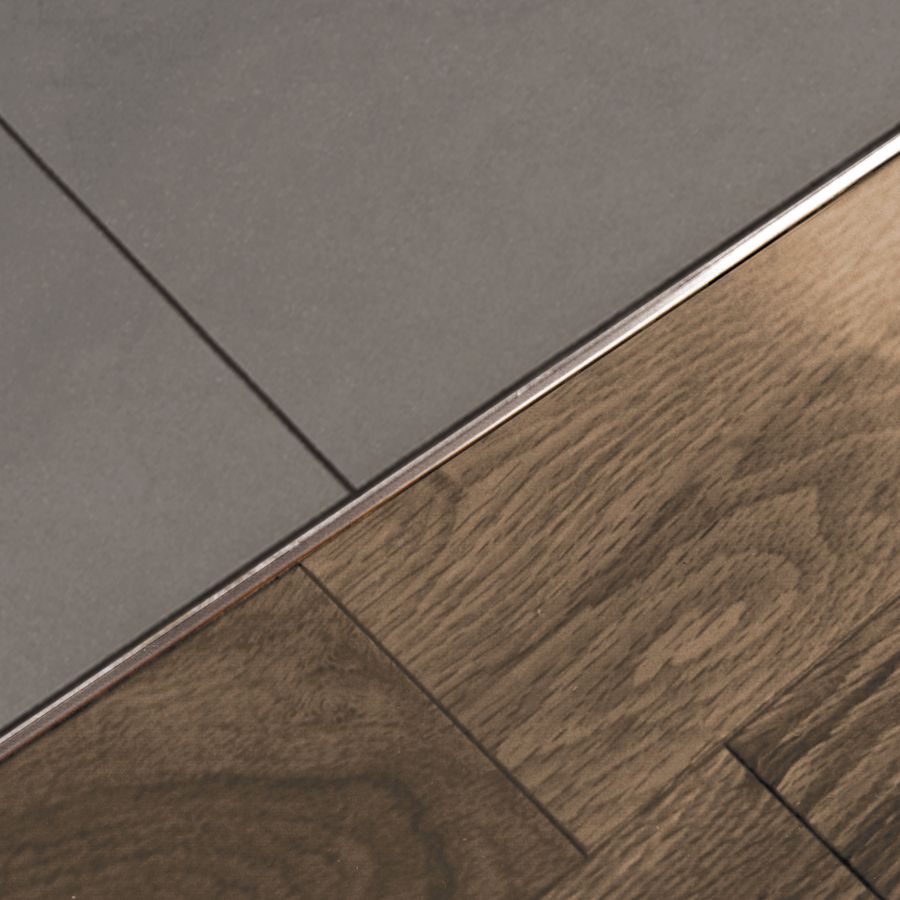
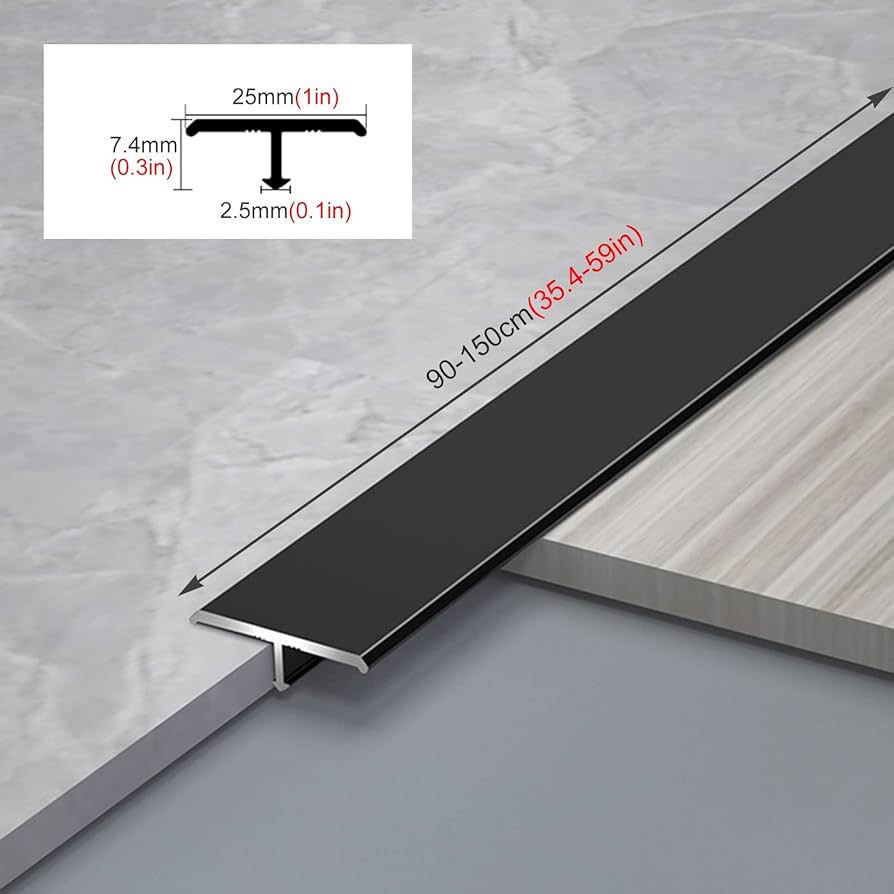
Transition strips can be categorized at the application level as tile to tile, tile to floor, tile to carpet, and carpet to floor. When it comes to their differences, besides varying in style, the main distinction is in size. Besides, the materials of transition strips you can choose are: stainless steel , aluminum and brass. These three materials can match your whole house decorating style easily.
Overall, transition strips give a sleeker and more modern look. If you like minimalist style, I think transition strips are the best way to go.
P.S. : Transition strips allow you to have more room to maneuver because of its easy installation and replaceable nature. Even if there is damage afterward or you want a different style, you won't have to go through the headache of doing so.
>> See How to choose right tile transition strips
>> See How to install tile transition strips
The Cobblestone
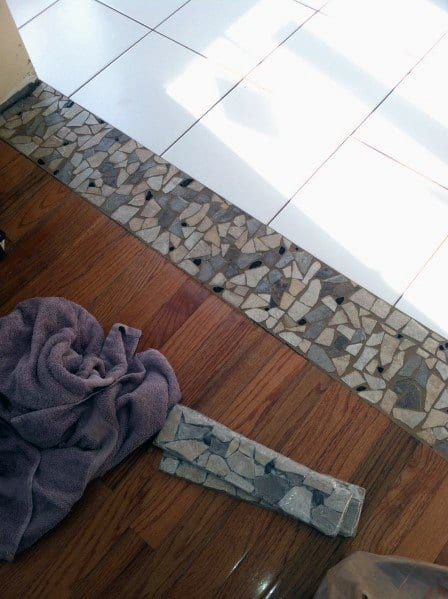
As a common building material, cobblestone is also a good choice. There are many advantages, such as:
- Durability: Known for its durability, cobblestone can withstand a lot of foot traffic and won't show wear and tear as a result.
- Versatility: In addition to matching different design styles, the uneven surface of cobblestone makes it comfortable to step on.
- Easy to maintain: Cobblestone is highly resistant to corrosion because it has a hard time reacting chemically with other substances, so you don't need to worry about damaging it with the cleaning agents you use when cleaning.
The Diagonal Cut
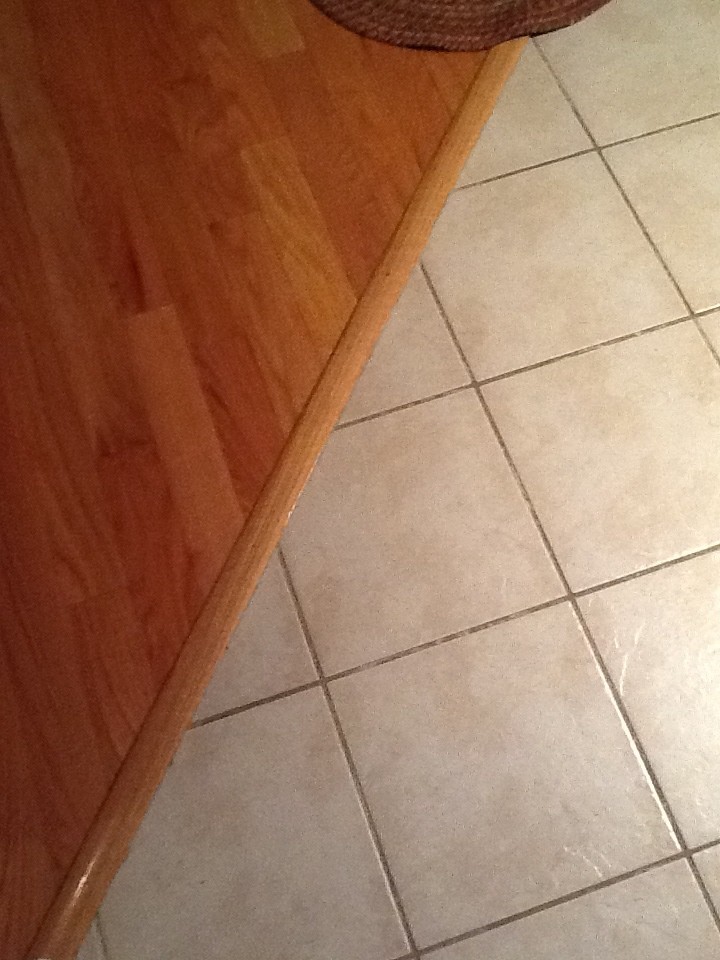
In contrast to straight lines, diagonal cuts will have more visual impact. It will give your floor a unique artistic touch.
By cutting your tile and wood flooring along diagonal lines, you can create a visual focal point. This transition works for all styles of home decoration and can make your floor transitions more lively and interesting.
If you're tired of flat, straight lines, try a more eye-catching diagonal line.
The Curved Transition
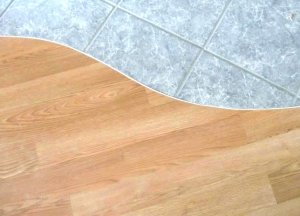

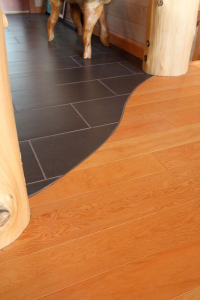

If you feel that diagonal lines are a bit too unconventional and don't quite go with your decorating style. Consider using curves instead. It's an eclectic choice that doesn't look monotonous or overbearing. A gentle and natural curve can perfectly divide areas of your home, such as the kitchen and living room. Curves will always bring a sense of elegance, which is why it is more suitable for stylish home styles. But the downside is that curves are one of the more difficult styles of all to achieve. This is because for beginners, cutting the curvature as well as the gentle curves that they desire is a whole new challenge.
The Mosaic Transition
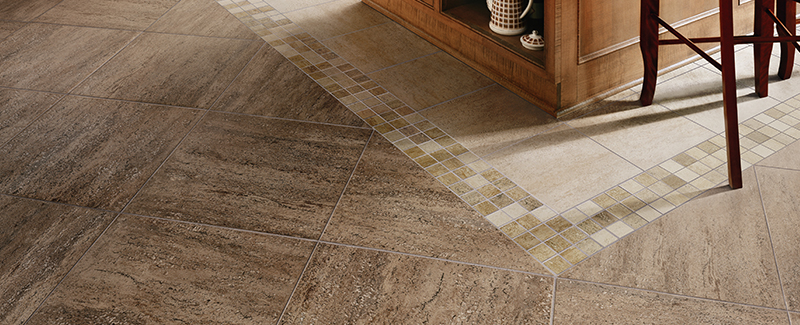
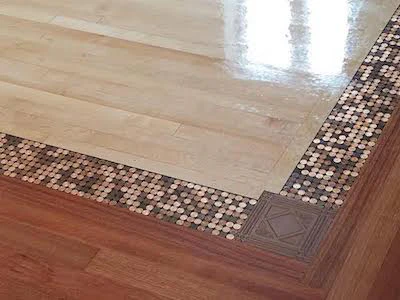
In recent years, mosaic has gradually become a preferred style. It gives an overall feeling of simplicity and does not look too monotonous. Because it consists of a large number of squares, its style is versatile. You can go for a more retro pixelated look or a more elegant modern look.
It is this characteristic that makes Mosaic Transition have a high status among the adaptability. If you can't find your favorite color combination on the market, you can also seek private customization. Mosaic transitions are not difficult to customize, so they are generally not particularly expensive.
The Polygonal Pattern (Honeycomb Shape)

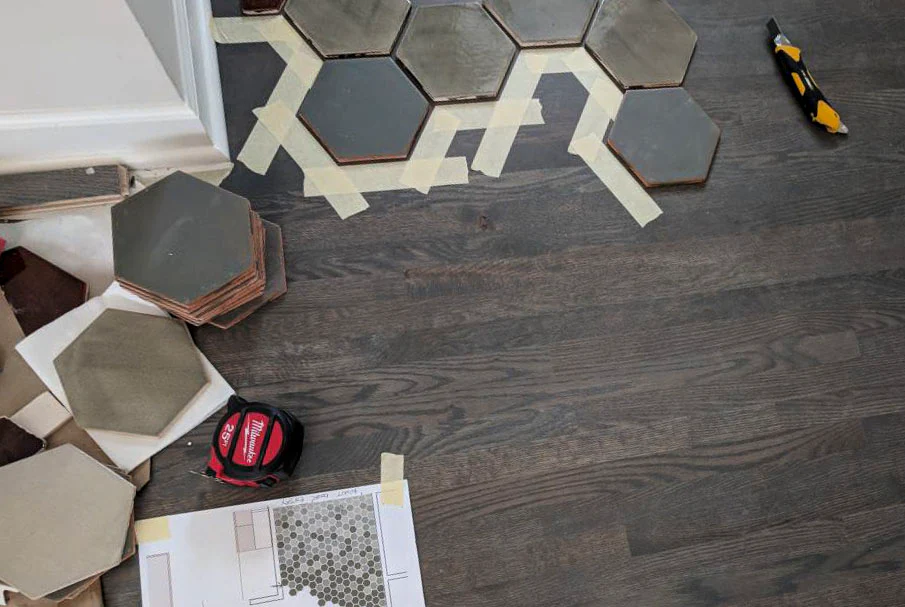
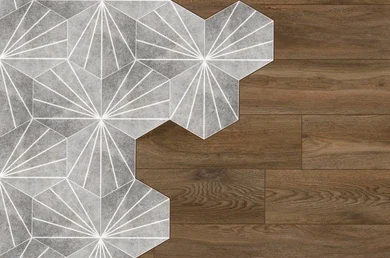
Hexagons are the most common type of polygonal pattern in home decorating. It is sometimes referred to as "honeycomb". When several hexagons are neatly pieced together, it creates a cozy feeling. When several hexagons are neatly pieced together, it will create a cozy feeling for you. You can feel the aesthetics of the angles to your heart's content. And all you need to do is pick your favorite color and pattern.
To be honest, you'll have a hard time being uncoordinated. Because hexagonal piecing is just so natural in the transition from tile to wood flooring. If you are looking for a uniform and simple transition, then hexagons would be a great choice. By the way, this pattern is very easy to install. Prepare the squares and some tape, and one person can easily complete the installation of the tile to wood floor transition.
The Mixed Material Transition
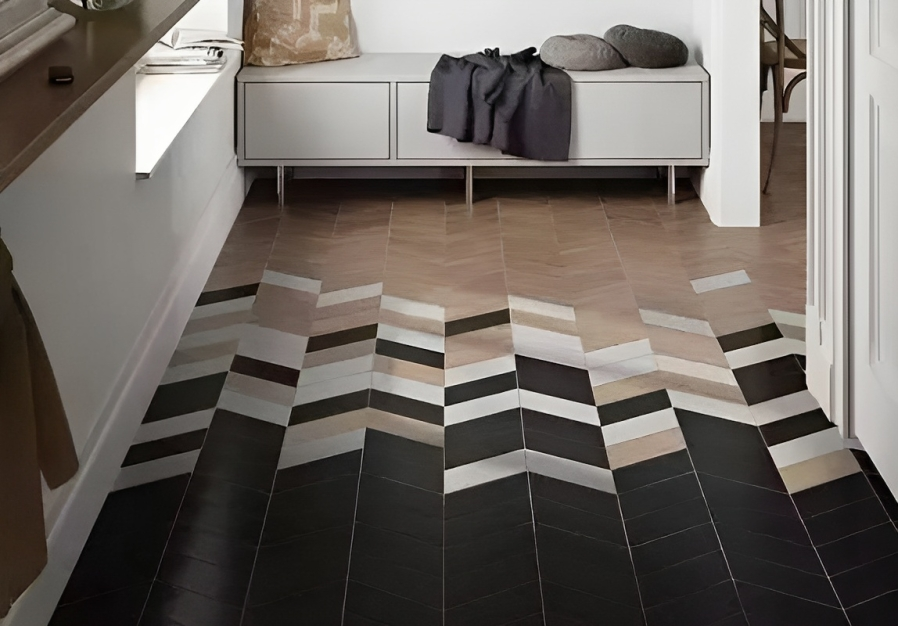
Mixing materials is a rather vague concept. In layman's terms, it means that you can patchwork with your favorite materials and of course, colors. A more common practice is to use only planks and tiles. When they are staggered together, it brings a special visual effect. It will be obvious to you that your tiles are slowly transitioning to the wood flooring, which is also known as a "fade". In practice, you don't need to follow a strict alternating pattern. You can choose the spacing of the joints to your liking and achieve a tile-to-floor transition that is completely personal to you.
The Elevated Transition

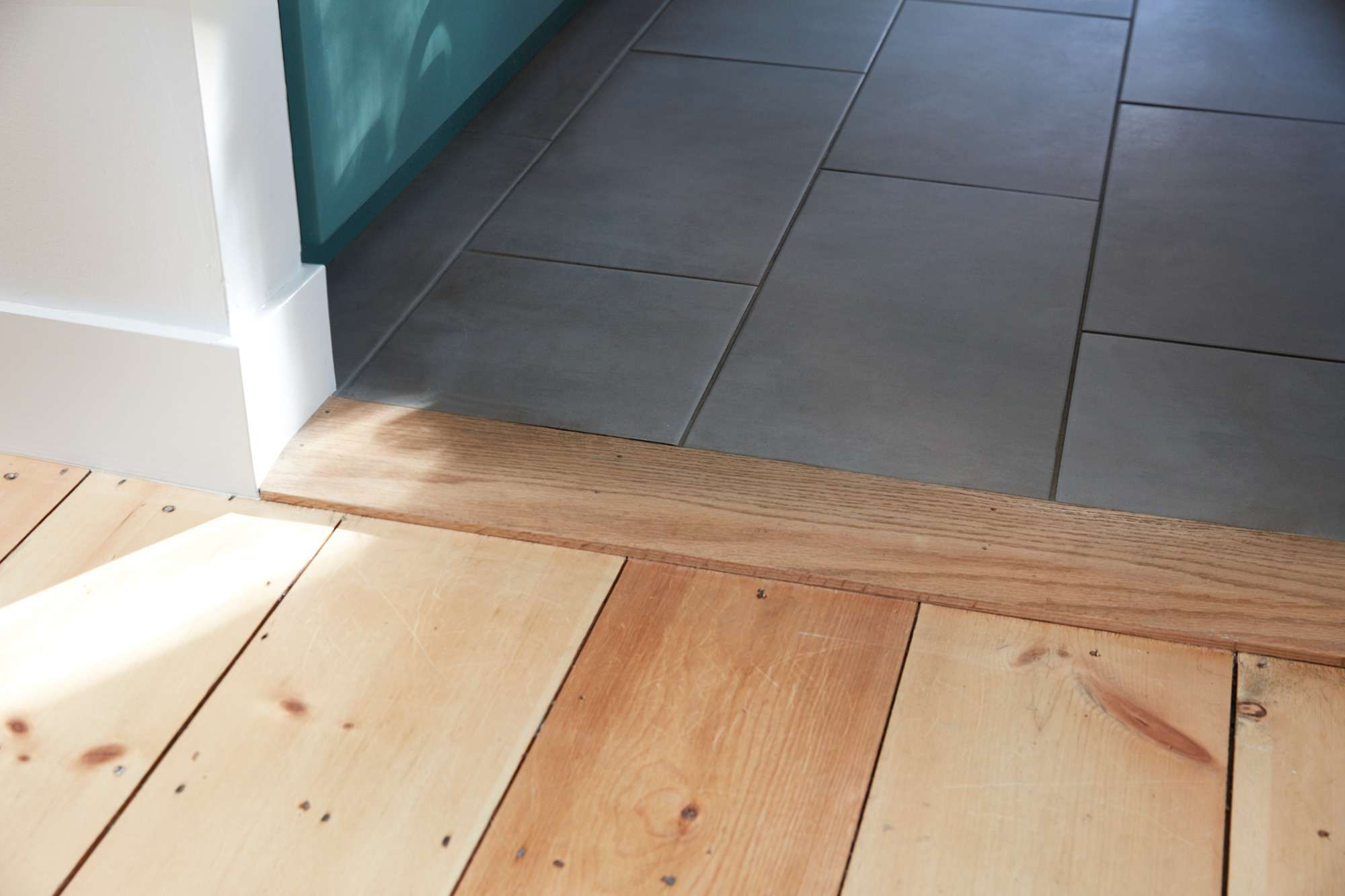
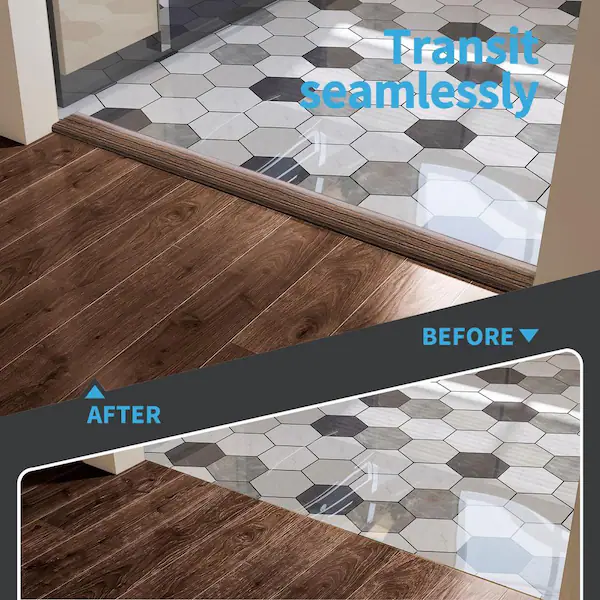
If you find the above tile transition styles to be too bland and want to enhance the feeling of space a bit. Then you might consider raising the height of the transition area. You can choose from dedicated tile transition strips, or ready-to-paste transition strips. No matter which option you choose, you can complete your transition from tile to wood flooring with an easy installation and get a better height difference.
Please be careful! While this enhances the visual effect, the height difference also presents a potential safety issue. Make sure you think through whether this will affect your daily life. Let's say you just get up in the middle of the night to pour a glass of water in the kitchen and you accidentally fall.
The Fish Scale Scallops
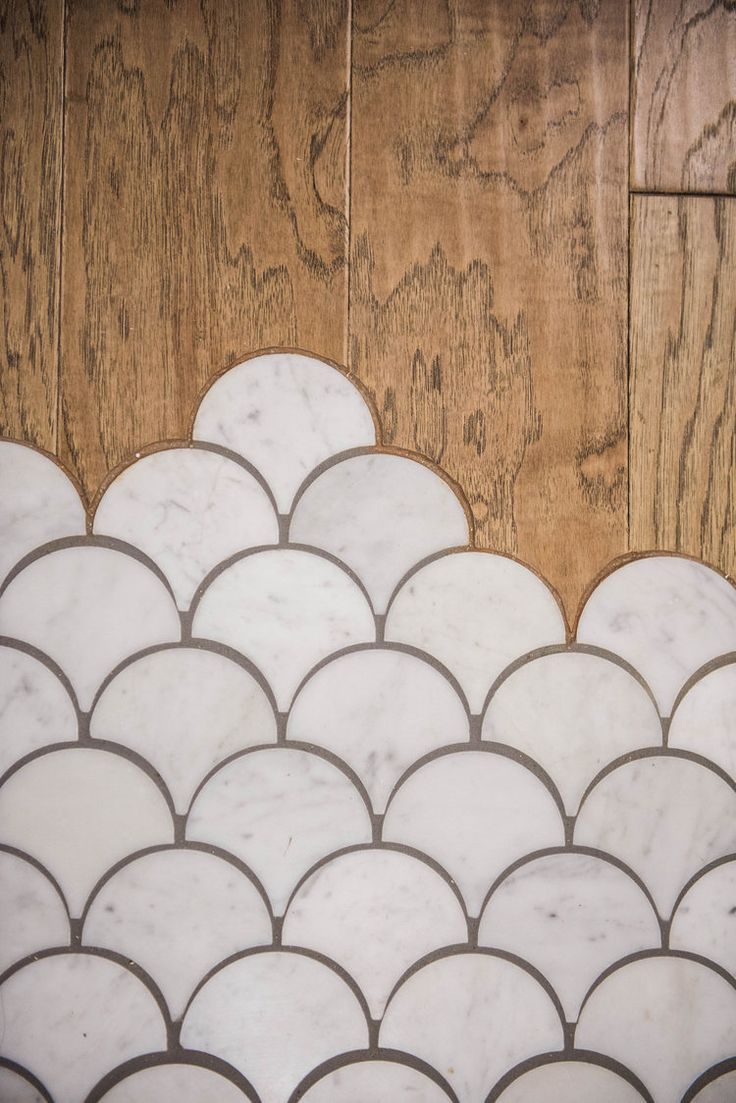
Fish scale is also a transitional style achieved by splicing a pattern multiple times. It will give the tiles more character as they transition to the floor, a character that comes from an oriental vibe. Especially if you choose a blue and white color scheme, it will look like the waves of the ocean.
Keep your creative juices flowing
Let's review. If you are ready to move to create a unique tile to wood floor transition for your kitchen. So what should you always consider?
I hope you can go for aesthetics without forgetting the overall style of your house or safety. The creativity goes far beyond that, you can pick one of the above mentioned styles that you like or you can blend their features into a new style.
If you have any ideas or concepts, feel free to contact me and let's discuss anything about decorating.
Frequently Asked Questions About Tile to Wood Floor Transition Ideas
How to combine tile and wood flooring
This actually solves the problem of transitioning tile to wood flooring. The more common and easy way to do this is to use transition strips as well as splicing strips of other materials. You can refer to the various styles mentioned above.
How to lay hexagon tile
- Clean the floor and make sure the contact surface is level.
- Use a pencil to draw the area you are laying on the ground.
- Use tape or adhesive to get the tiles to fit the floor.
- Use shims between the tiles and grout.
How to transition from tile to carpet
You can use transition strips that are specifically designed for transitioning tile to carpet. you just need to use the fixtures to hold the transition strips in place and then gently tuck your carpet into the grooves, making sure the barbs hold your carpet in place.


